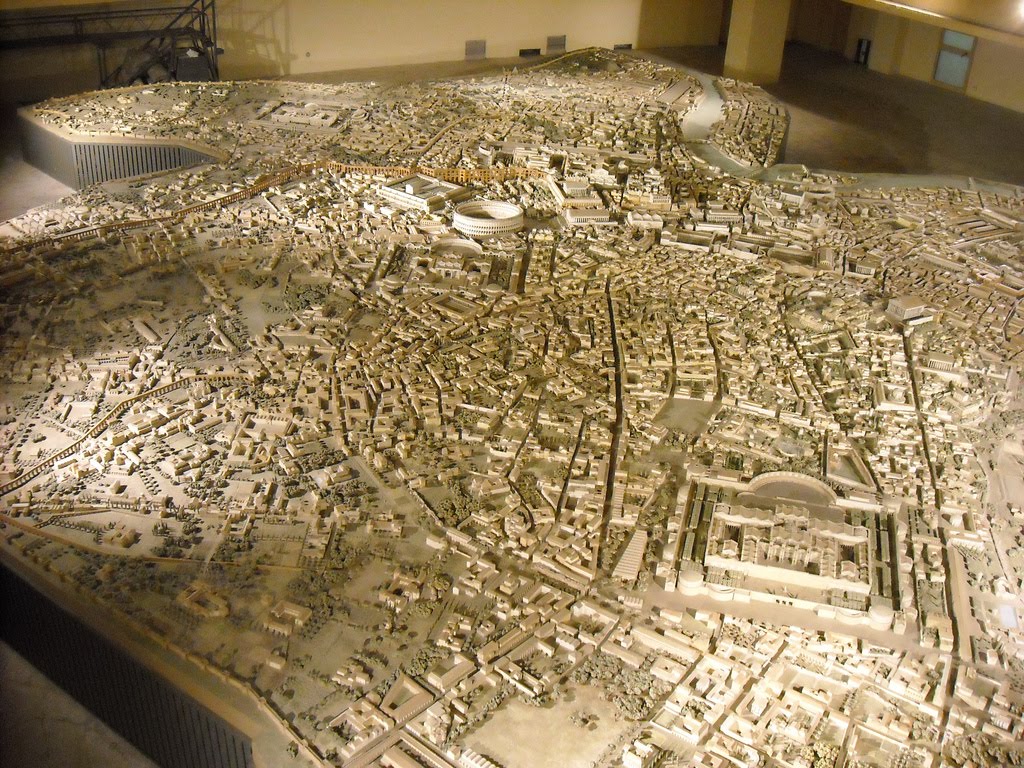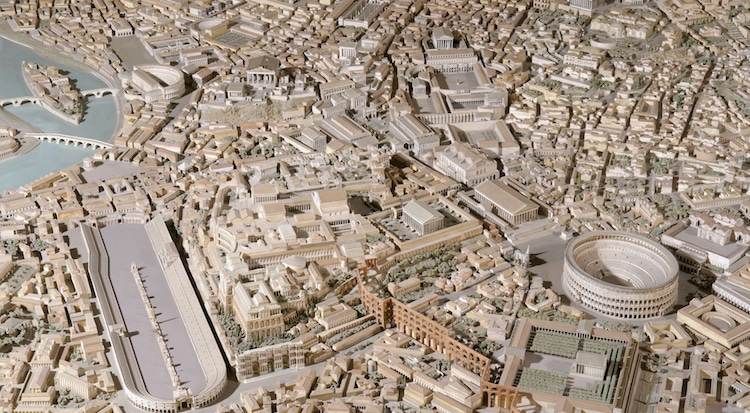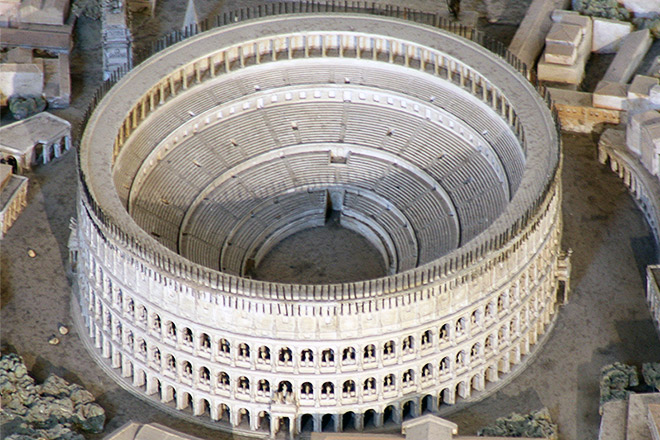This incredible plaster model of Ancient Rome known as the Plastico di Roma Imperiale was intricately designed by archeologist Italo Gismondi throughout his lifetime to depict what the ancient city looked like in the 4th century AD.
The model is actually based on Rodolfo Lanciani‘s 1901 map but was expanded on by Gismondi into this 1:250 scale model through the 1950s and up to 1970. It’s housed at the Museum of Roman Civilization and has even been used in movies such as Gladiator.
Gismondi’s precision has earned this model a distinguished reputation for being an important reference for monuments throughout Rome such as Colosseum and Pantheon. The scale model was actually commissioned by Mussolini in 1933 and resides in a tiny neighborhood in Rome.
Some believe the purpose of the model was for the use of city planning and propaganda by a fascist regime. It measures 55 feet wide and 55 feet long and truly serves now as an educational reference for students and tourists who live and travel throughout the ancient city.
The entire work consists of approximately one hundred and fifty frames, assembled, in almost all cases, along the road axes.
Ancient Rome Scale Model

Gismondi worked on this model between 1935 and 1971

The entire model is 55 feet wide by 55 feet long



A few shots were also used in Ridley Scott’s Gladiator

If you thought that was cool make sure you check the architect that turned an old cement factory into a fairytale home!
h/t: Open Culture
- Share On Facebook
- Like
- Digg
- Del
- VKontakte
- Flattr
- Buffer
- Love This
- Odnoklassniki
- Meneame
- Blogger
- Amazon
- Yahoo Mail
- Gmail
- AOL
- Newsvine
- HackerNews
- Evernote
- MySpace
- Mail.ru
- Viadeo
- Line
- Comments
- Yummly
- SMS
- Viber
- Telegram
- Subscribe
- Skype
- Facebook Messenger
- Kakao
- LiveJournal
- Yammer
- Edgar
- Fintel
- Mix
- Instapaper
- Copy Link
